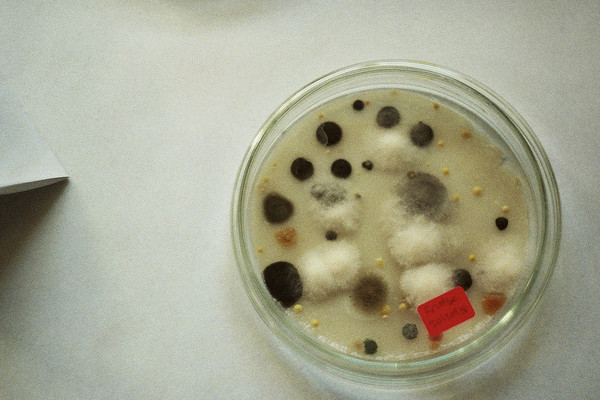A great concern when using any antibiotic medication today is the possibility of promoting resistant bacteria. Like many organisms, bacteria resist threats to their survival, such as antibiotics. This resistance can be inherent in the bacteria or developed and acquired by the bacteria after exposure to antibiotics.
Image Source: Visuals Unlimited, Inc./Carol and Mike Werner
Intrinsic resistance can come from a bacteria’s preexisting structure or function and, therefore, is found in every bacteria of the same species. For example, the structure of the bacterial membrane may be too selective to allow the drug to enter, preventing the antibiotic from affecting the function of the bacteria. Multiple membranes also make it more difficult for antibiotics to penetrate bacterial cells. If the antibiotic manages to enter the cell, some bacteria have innate methods of resistance, such as deactivating the antibiotic or expelling the antibiotic from the cell.
Extrinsic resistance, on the other hand, is not necessarily found in all bacteria of one species. Extrinsic resistance appears when individual bacteria modify their structure or function to combat an antibiotic, or when bacteria acquire resistance genes from another bacterium. These modifications provide resistance. Extrinsic mechanisms are very similar to intrinsic mechanisms; bacteria can modify their enzymes or mechanisms so that they are no longer susceptible to an antibiotic or modify the antibiotic so that it is no longer effective. Bacteria can also develop mechanisms to expel the antibiotic from the cell.
Image Source: By R. Parulan Jr.
Using the methods listed above, bacteria can become resistant to antibiotic treatments, making them significantly more difficult to eliminate. Because antibiotics remove weaker bacteria first, resistant bacteria can spread more easily, leaving an infection of highly resistant bacteria. The extensive use of antibiotics in healthcare settings and agriculture creates many cases where resistant bacteria can develop, survive, and spread.
Due to these factors, antibiotic resistance can be a significant problem for healthcare all over the globe. However, steps can be taken to alleviate the issue, such as using antibiotics only when they are absolutely needed as well as creating new antibiotics to target resistant bacteria. Taking antibiotics only when prescribed and finishing the entire treatment regimen can also help. Though antibiotic resistance is a serious matter, we can treat bacterial infections more effectively with a better understanding of the resources available to us.
Feature Image Source: 30.09.2013 by foam










